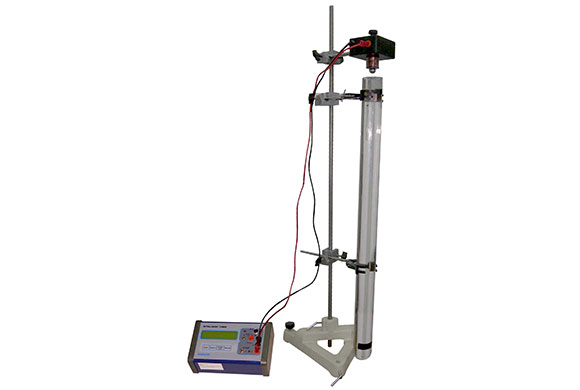
Principle and Working:
A body moving in a fluid is acted upon by a frictional force in the opposite direction to its direction of travel. The magnitude of this force depends on the geometry of the body, velocity of the body, and the internal friction of the fluid. A measure for the internal friction is given by the dynamic viscosity η. For a sphere of radius r moving at velocity v in an infinitely extended fluid of dynamic viscosity η, the frictional force according to Stokes' law is given as:
...
F1=6.π.η.r.v
In the present setup, the viscosity of glycerine is found by allowing a steel ball to fall through a column of glycerine and measuring the time taken by the ball to cover a known distance. The steel ball is released using an electromagnet and simultaneously time is measured with a digital timer.